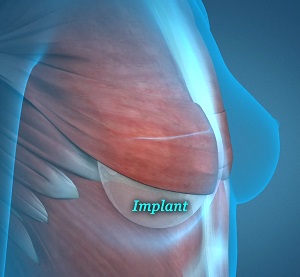
What is Breast Implant Reconstruction?
Breast implant reconstruction (also known as breast reconstruction) is a surgical procedure to recreate or reconstruct your breast following mastectomy - a breast removal surgery to treat or prevent breast cancer.
Why Do You Need Implant Reconstruction?
Implant reconstruction is necessary if you choose to restore the shape of your breast following breast removal. You may opt for the procedure at the time of the mastectomy (immediate reconstruction) or a later date after mastectomy (delayed reconstruction).
Who will Perform Your Implant Reconstruction Surgery and Where Is It Done?
Implant reconstruction is a complex procedure performed by a board-certified plastic surgeon at hospitals specialized in implant reconstruction surgeries.
How will Your Doctor Prepare You for Implant Reconstruction?
Once you have made the decision to undergo breast implant reconstruction, your surgeon will:
- Explain about the surgical options and the pros and cons of implant reconstruction.
- Describe different types of breast reconstruction with supporting photos.
- Provide information on the follow-up care after the surgery including guidelines on food, medications, and smoking.
Implant Reconstruction Procedure
Your surgeon will use a breast implant to reshape your breast. A breast implant is a round or teardrop-shaped silicone shell filled with silicone gel or salt water (saline). Your breast is reshaped in two stages as the procedure involves multiple surgeries.
During the first stage, your surgeon will:
- Give you general anaesthesia which will make you sleep and be pain-free.
- Create a pouch under your pectoral chest muscle.
- Place an appropriate tissue expander in the pouch.
- Position a valve just below the breast skin.
- Connect the valve to the expander with a tube.
You will visit your surgeon every couple weeks for them to inject a small quantity of saline into the expander. The expander slowly enlarges over time and makes room for the breast implant. Once the expander reaches the correct size, you will be asked to wait for 1 to 3 months before undergoing the breast implant surgery.
In the second stage, your surgeon will:
- Remove the tissue expander and replace it with the breast implant.
- Close off the surgery by suturing the chest opening.
You may need to have another minor surgery later to remake the nipple and areola area.
What are the Risks Involved with Implant Reconstruction?
As with any surgery, there is a possibility of risks and complications when you undergo implant reconstruction. Post-reconstruction, correcting any of these complications may require an additional surgery.
Some of the major risks or complications involved are:
- The high prospect of mismatch in size or appearance of the breasts (asymmetry).
- Bleeding, breast pain and implant rupture or deflation.
- Chances of infection and poor healing of the incision.
- Increased risk of breast surgery in future (to replace or remove the implant).
- Changes in breast sensation and risks associated with anaesthesia.
Recovery Time
Post-surgery, you may experience tiredness and soreness in the surgical area for several weeks. Your doctor will prescribe medication to help keep you comfortable during the healing process. You will also be instructed on activity restrictions while you heal. Getting back to normal can take six weeks up to a year or so for complete healing.
Key Facts to Remember
Breast implants, regardless of the type (saline or silicone), last anywhere between 10 and 20 years. Therefore, you may need a future surgery at some point to replace the implant.
Breast implant reconstruction will:
- Give you a breast contour similar to your breast before mastectomy.
- Provide better symmetry to your breasts making them look similar under clothing.
- Help you avoid the need for an external prosthesis inside your bra.
- Improve your self-esteem and body image.
